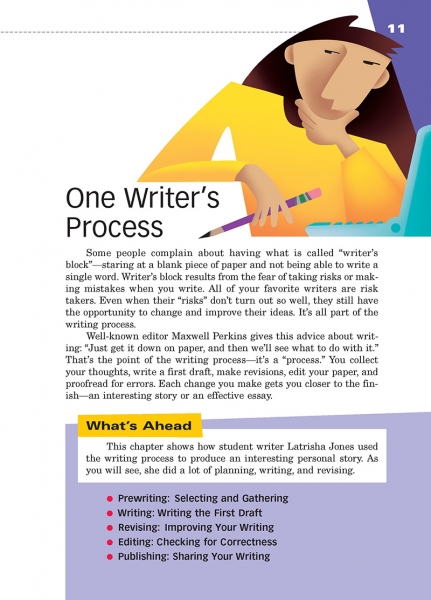Page 011 from

Start-Up Activity
Take a poll: "Think about how long you take to get up and get ready for school each morning. Raise your hand to show the amount of time:"
-
Less than 10 minutes
-
10–30 minutes
-
31–60 minutes
-
More than 60 minutes
Then ask a student who answered "Less than 10 minutes" to describe the process of getting up and getting ready. Afterward, ask a student who answered "More than 60 minutes" to describe the process of getting ready. Point out that different people have different styles and follow different processes. The main thing is to have a process that works for the person and yields good results.
Let students know that writers also follow different processes to go from "waking up" (realizing they need to write) to "arriving" (having finished a final draft). In this chapter, students will see one writer's process and will start discovering their own processes.
Think About It
“You don't become great by trying to be great. You become great by wanting to do something, and then doing it so hard that you become great in the process.”
—Randall Munroe

Start-Up Activity
Take a poll: "Think about how long you take to get up and get ready for school each morning. Raise your hand to show the amount of time:"
-
Less than 10 minutes
-
10–30 minutes
-
31–60 minutes
-
More than 60 minutes
Then ask a student who answered "Less than 10 minutes" to describe the process of getting up and getting ready. Afterward, ask a student who answered "More than 60 minutes" to describe the process of getting ready. Point out that different people have different styles and follow different processes. The main thing is to have a process that works for the person and yields good results.
Let students know that writers also follow different processes to go from "waking up" (realizing they need to write) to "arriving" (having finished a final draft). In this chapter, students will see one writer's process and will start discovering their own processes.
Think About It
“You don't become great by trying to be great. You become great by wanting to do something, and then doing it so hard that you become great in the process.”
—Randall Munroe